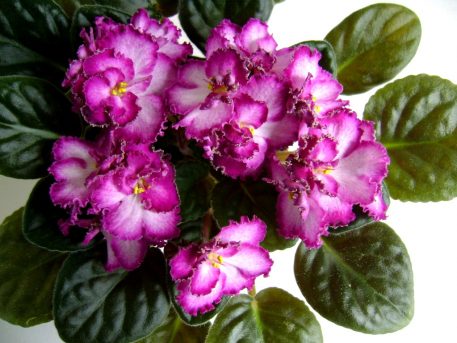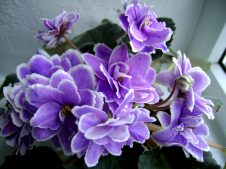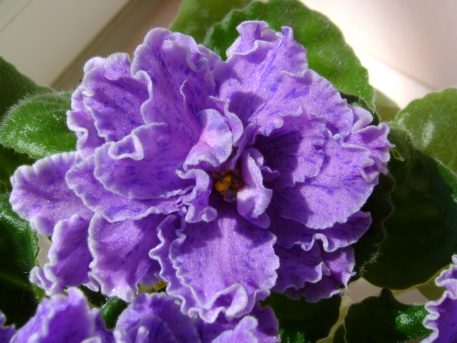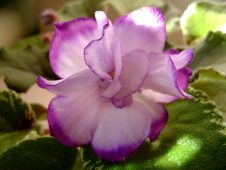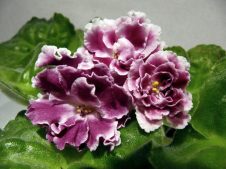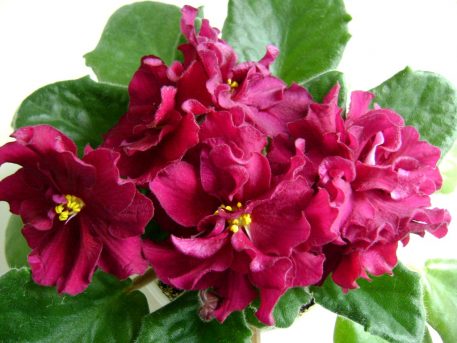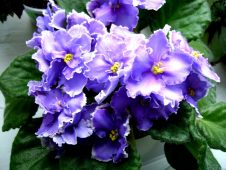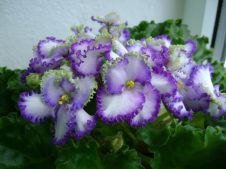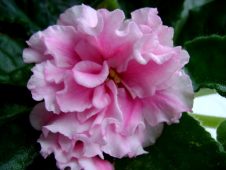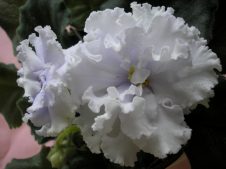Uzambara violet is the favorite of many gardeners. The plant looks very beautiful during flowering, but it requires painstaking and thorough care.
Material Content:
Description of flower varieties
All flower varieties are bred from a variety with a blue color. Blue violet can be considered the founder of a huge collection of flowers with a wide variety of shades.
Violet violets can be fluffy or semi-double. Fringes can stretch along the edges of the petals. These varieties are quite unpretentious compared to others. The most popular are “Winter Rose”, “Baltic”.
Bred various types of white violets. They differ in flowers of somewhat smaller sizes than purple. White violets are very popular, and the most favorite varieties among our flower growers are “White Lace” and “Bridal Bouquet”.
Fabulous beauty pink violets, which can be interspersed with terry or with wavy edges of the petals. The most favorite variety is Marquise, and Magdalene is also very popular.
In the collection of each grower, fond of cultivating violets, there are lilac varieties. Lilac violets are distinguished by very large flowers. One of the popular varieties is “Beloved Daughter”.
And, of course, blue violets. Varieties of blue violets are almost every collector. A bright representative of such violets is the Blue Danube variety.
Features of the cultivation of uzambar violet
Growing violets at home is a painstaking work, but very grateful. Violets in response to your attention and care will give a fabulous beauty of flowering.
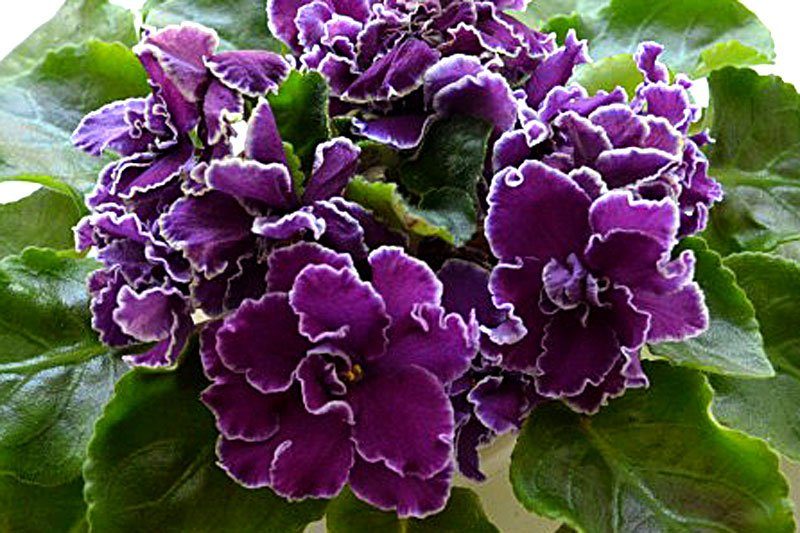
Violets or senpolias are very fond of leaving and for them it is necessary to create certain conditions. In general, difficulties in growing this flower may arise due to improperly selected pot space.These plants are very photophilous, but at the same time do not tolerate direct sunlight. An ideal place for a flowerpot is the northeast window. On the south side of the senpolia, it is imperative to shade, otherwise they will die from the bright sun.
In winter, the senpolia needs to be illuminated, and for this flower it does not matter at all, it will be a special phytolamp or an ordinary incandescent bulb. The main thing is that the violet should be light.
Look great collection of violets planted in the same pots. The ideal pot size is about 10 cm in diameter. The material from which the flowerpot will be made does not matter - the violet will be equally cozy both in a plastic pot and in a ceramic.
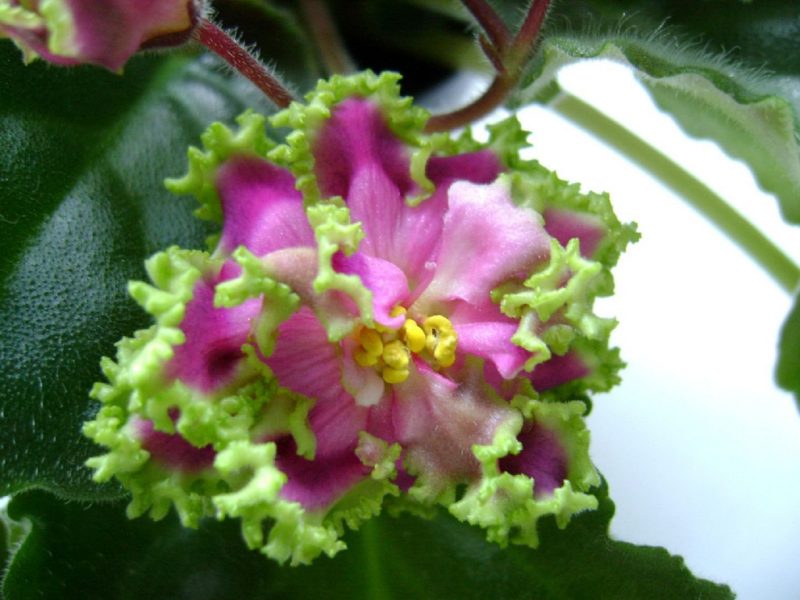
Soil is best to buy ready. But experienced growers note that ready-made soil mixtures are too light. Therefore, many make up the soil mixture on their own. To do this, mix:
- part of the turf;
- part of the humus soil;
- part of the sand;
- part of the moss sphagnum.
Although you can not connect the soil, but take it in the forest under coniferous trees. At the bottom of the pot, it is imperative to arrange a thick drainage. Do not use sawdust!
Home Care
Caring for the uzambar violet at home should be competent, otherwise the flowers will simply die. And the main thing in growing these flowers is proper watering.
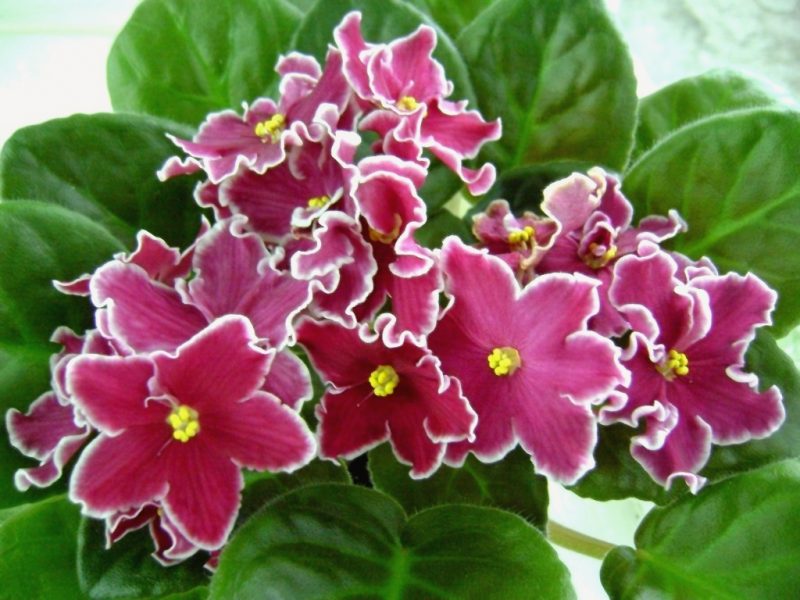
In no case should you water the plants anyhow. Soil moisture should be closely monitored, because the main cause of death of the senpolia is rotting of the roots. It is better to use rainwater for irrigation. Violets are watered only under the root, trying not to drop a drop on the foliage. Water after moistening the soil from the pan must be drained. If droplets of moisture get on the leaves, they can be removed with a paper towel.
It is desirable that the room was +20. At high temperatures, humidity decreases, and at lower violets will grow poorly.
The first three months after planting the senpolia do not need additional nutrition. But, when the soil mixture becomes poor, you will have to additionally fertilize.
For fertilizing senpolia, it is best to use complex fertilizers. It is desirable that mineral and organic compounds alternate. A couple of hours before fertilizing, plants are abundantly watered. The main rule - violets are better to undernourish than to overfeed.
Read also:violet at home
If the plant looks weakened, then do not rush with fertilizer. First you need to understand the reason for the poor health of the senpolia. If the leaves of violet begin to fade, it should be treated with Epin and covered with a film for a couple of days.
How to care after flowering
Senpolia blooms can last up to 8 months, and then the flower leaves during the dormant period. After flowering, remove all dried buds and reduce watering. On one plant there can be up to 100 flowers, which take a lot of energy from the flower.
In winter, violets still need bright light. The temperature in the room should be maintained at about +20. After flowering, fertilizing plants is not applied.
Breeding methods
The simplest and most popular among amateur gardeners is the reproduction of Uzambara violets - by leaf. You can take leaves for breeding senpolia all year, although it is better to carry out the procedure in the spring.
Strong cuttings without visible signs of disease are cut into cuttings. Petiole should be at least 1.5 cm long. For the next 20-30 days, the leaf is buried in wet sand or put in water for root formation. As soon as the violet takes root, it can be planted in a separate pot.
For young senpolia it is advisable to prepare a separate soil mixture by mixing for this:
- part of the turf;
- part of the sheet land;
- part of peat;
- part of the sand;
- part of the humus.
After 45 days, the young senpolia can be transplanted into a larger pot.
Still violets propagate well by stepsons. Stepsons are lateral processes that produce many varieties of Saintpaulias. They are rooted just like the leaves, pinching them from the mother bush.
It is interesting:home diplomatic care
If the variety does not give stepsons, you can pinch the growth point, and then they will appear. Suitable stepchildren, reaching a height of 3 cm.
Pest and Disease Control
Diseases of the uzambar violet appear due to commonplace errors in care. Therefore, the cause of the disease should be identified. Violets can get powdery mildew due to dampness. A dense white coating appears on the leaves, which resembles flour. The plant may not bloom and eventually dies. In this case, the senpolia should be treated with Fundazol.
Gray rot looks like a brown edge, which can also lead to the death of a plant. Unfortunately, patients of the senpolia are unlikely to be saved. The best preventive measure for the appearance of gray rot is to spill boiling water on the soil before planting the plant.
Fusarium spores lead to decay of the violet outlet. In the event of a disease, the flowers are treated with fungicidal preparations.
Violets in indoor conditions are most often attacked by a spider mite and aphids. Therefore, their pets should be inspected regularly to notice parasites in time. If insects are found, violets are treated with Aktara or home remedies - ash, soap, cologne diluted with water.
It is interesting:violets - how to care for blooming
Violets are fabulous plants that adorn the interior of many apartments. A little attention and care, and beautiful flowers will bloom in your house almost all year round.


